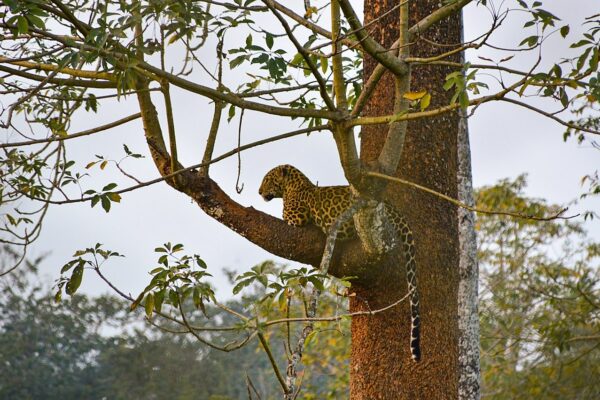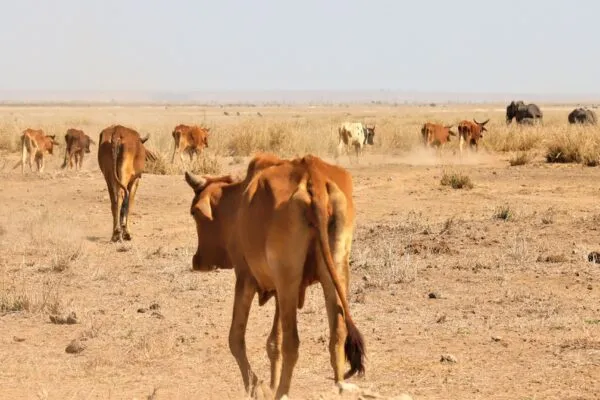Causes of Human-Wildlife Conflicts in India: Can We All Coexist?
There are several reasons for escalating man-animal conflicts in India, including agricultural expansion, rapid urbanisation, overgrazing, illegal grass collections, poaching, and deforestation
The history of human-wildlife conflicts dates way back to primitive times when man and animals lived in close proximity to each other. As human civilization advanced, the area inhabited by wildlife began to reduce. The land is limited and so are the resources. This created a difficult situation for both humans and animals, giving rise to several causes of human-wildlife conflicts, especially in India.
Many urban settlements and rural villages are located at forest edges, leading to increased encounters between humans and wildlife and consequently, conflicts. These conflicts may result when wildlife damage crops, threaten, kill or injure people and domestic animals such as pets and cattle.
The incidents of man-animal conflicts are widespread but not overly distributed because they are dependent on the proximity of wildlife. Here is a brief account of the causes of human-wildlife conflicts in India, major conflict zones in the country, and measures taken by the government and their effects.
Causes of Human-Wildlife Conflicts in India
Conflicts between people and wildlife have attained serious dimensions in many regions of the country to the detriment of conservation. Understanding conflict is the first step in finding solutions to mitigate the same.
One can only wonder: Is the animal population growing or are their habitats shrinking? Why, despite hundreds of wildlife sanctuaries and forests, do these wild animals roam around in human settlements? Is retaliating the only answer to human-animal conflict? The answer is not very hard to find.
✦ As the human population grows, forest cover shrinks and humans and animals begin to compete and jostle for space and resources. The conflict for space occurs every day between wildlife and people living in and around forests. The forest area of India covers 21.54 per cent of country land, animal reserves cover merely 4 per cent, and the Protected Area (PA) covers only 4.95 per cent of the total land.
✦ This meagre portion of land is home to nearly 3,000 tigers, over 25,000 elephants, over 3,000 rhinoceros, and nearly 7,000 leopards and thousands of other wildlife species. It is absolutely preposterous to even think that wildlife can be contained inside these small patches of land.
✦ There are many reasons for human-animal conflicts in India — human population explosion, shrinking forest cover, poaching, rapid and unplanned urbanization, which entails electrification penetrating forest areas, deforestation, increasing road density, destruction of natural animal corridors, agricultural expansion, and cultivation up to forest boundaries.
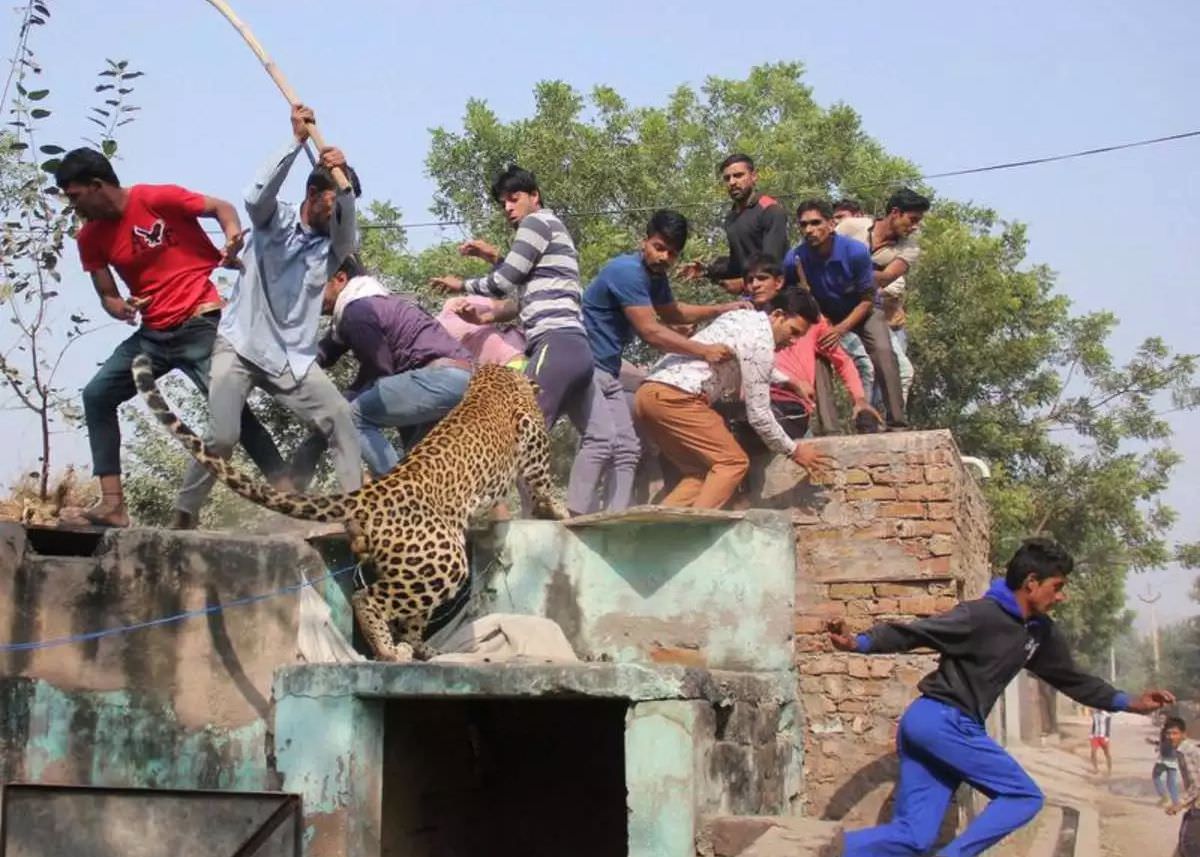
Image: Times of India
✦ Many factors contribute to the rising conflict incidents including development, human intervention has fragmented habitats of wild animals prompting them to enter human settlements in search of food and shelter.
✦ Developmental projects such as highways, railway tracks, and factories have destroyed many natural habitats of several animal species in the country. Some of the road networks even pass through protected areas, hence creating danger zones for wild animals.
Whenever a wild animal enters human colonies, both animals and the people act out of fear and attack each other, which further fuels fear and conflict.
Major Conflict Zones and Aftereffects
The Western Ghats, north-eastern states, and a few other regions in the north are deeply affected by the human-wildlife conflicts in India. The conflicts often end in the loss of life on both sides. Here are the main types of human-wildlife conflicts that are prevalent in India.
Leopard-Human Conflicts
The Indian leopard is reclusive by nature, but due to dwindling prey base, habitat loss, and poaching the animal is increasingly venturing into human habitation. There it preys on livestock and pets, and occasionally, it attacks humans too.
The cases of leopards straying into human habitation are mounting in the states of Uttarakhand, Himachal Pradesh, Assam, West Bengal, Karnataka, Maharashtra, and the outskirts of Delhi.
Human-Tiger Conflicts
Sundarbans are the hotspot for human deaths by tigers at their highest. The largest mangrove in the world, listed under both the World Heritage and the Ramsar conventions, the Sundarbans is home to an estimated 200 tigers.
With the increasing population in the region, conflicts are rising. Apart from Sundarbans, Kaziranga is also a human-tiger conflict zone.
Human-Elephant Conflicts
Assam, Meghalaya, Karnataka, Orissa, Kerala, Tamil Nadu, Jharkhand, and Kaziranga are the main man-elephant conflict zones. The loss of forest cover, mining, and encroachment push the mammoth towards human habitation.
Besides, elephants tend to move across habitats for feeding and breeding. The destruction and obstruction of natural movement corridors often create confrontational situations that often result in the loss of life on both sides.
Several other wildlife species such as nilgai, monkeys, and wild boars destroy the crops and stimulate anger from the people, who take desperate measures to take revenge.
Often the wild animals stray in the human settlements in search of food and shelter as their natural habitats are shrinking or to put precisely – getting destroyed by human activities.
If the wild animals come across people, they act out of fear and attack, which invokes feelings of anger and fear among the humans and they retaliate.
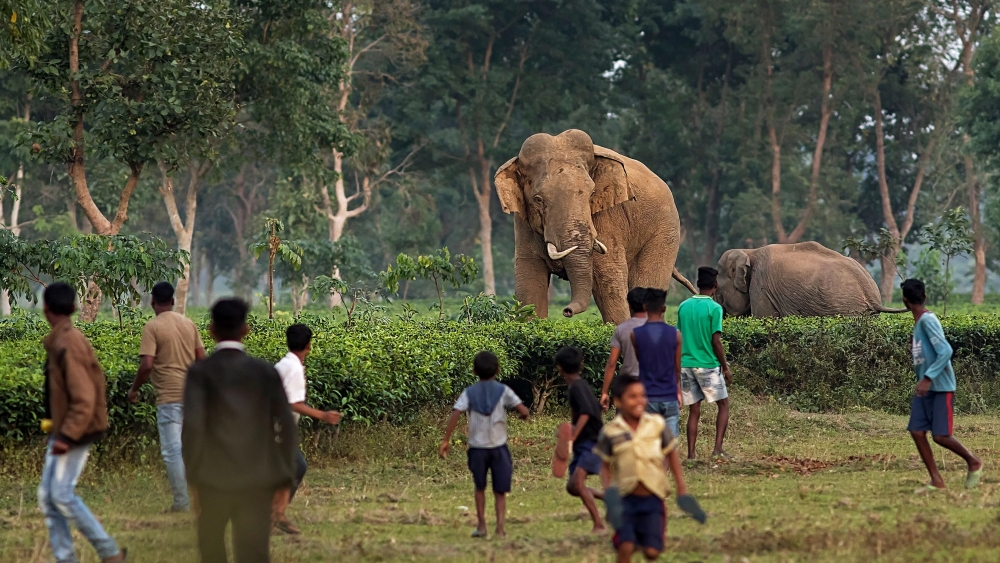
Image: The Quint
Expert Opinions on the Matter
N.V.K. Ashraf, a veterinarian at the Wildlife Trust of India, said the high death toll was likely because large numbers of people are dependent on forests for their livelihood.
People going deep into the forests in search of food or forest produce to run the risk of crossing the path of a tiger or a herd of elephants.
Dr. Ullas Karanth suggests that when a carnivore animal starts feeding on human flesh, it’s better to end its life rather than attempt to catch it and put it in a cage. He also advised that the resources must be put to the conservation of wildlife efficiently.
Prerna Singh Bindra in her book “The Vanishing: India’s Wildlife Crisis” raises a few ever-present questions. All these questions break down the complex topic of human-wildlife conflicts in India into a few simple yet very crucial points.
She asks a series of questions: Can a country like India ‘afford’ to protect wildlife? Is there space for wildlife in a land-scarce, densely populated country? Can wild animals and people coexist or is the relationship inevitably confrontational? Is conservation and protecting the flora and fauna a hindrance to the growth agenda? Is development inimical to ecological security?
According to Vidya Athreya, wildlife biologist, Wildlife Conservation Society, India, there is no other choice but to share space with humans for animals to survive in India.
Ravi Chellam, who did a detailed study on Gir’s lions simply questions the importance of “who was there first.” According to Mr. Ravi, it is essential to understand the spatial model and share space and resources with the wildlife species as they were here long before mankind.
The conservationists emphasize the importance of the co-existence of humans and wildlife.
Measures Taken by Government
The government has initiated ‘Integrated Development of Wildlife Habitats’, ‘Project Tiger’ and ‘Project Elephant. The Central Government provides financial assistance to the State Governments for the improvement of forest and wildlife areas such as the national parks and sanctuaries to augment food and water availability in forests to reduce animal migration from forests to habitations.
Construction of barriers like boundary walls and solar-powered electric fences around the sensitive areas to prevent wild animal attacks.
The authorities have also developed the necessary infrastructure and support facilities for immobilization of the identified problematic animals through tranquilization, and their relocation to the natural habitat or rehabilitation in rescue centres.
Many programmes have been launched to sensitize people and create awareness about the precautionary measures in case of wild animal attacks.
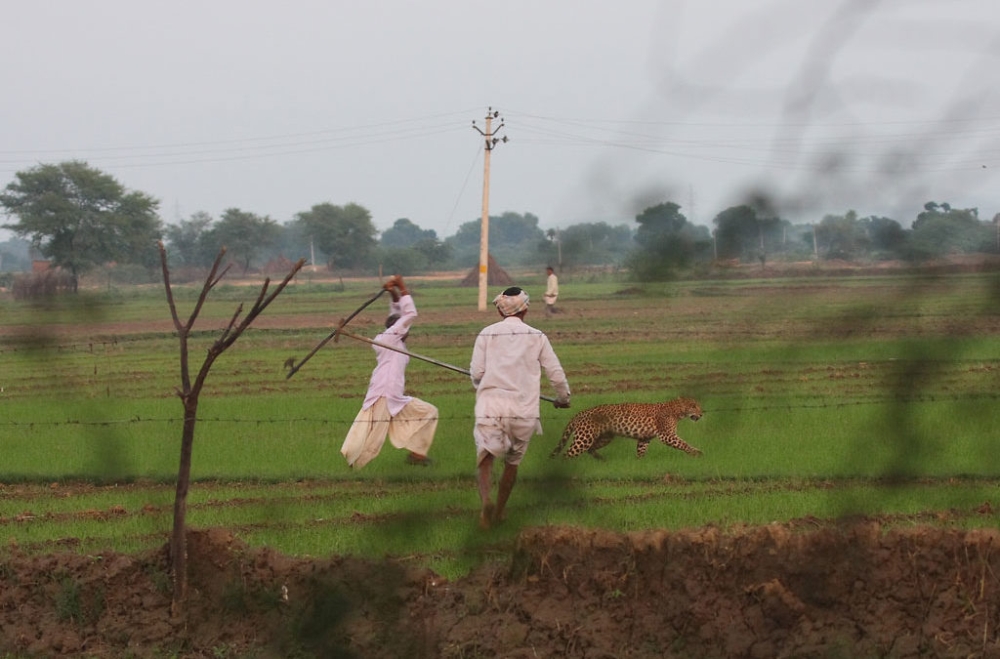
Image: Tiger Watch
Eco-development activities are undertaken in villages around Protected Areas (PA) to elicit the cooperation of communities in the management of PA, which include actions to address the grievances of people regarding man-animal conflicts. Training programmes are conducted for forest and police staff to address the problems of human-wildlife conflicts in India.
The involvement of the research and academic institutions and leading voluntary organizations have expertise in managing human-animal conflict incidents. Immune-contraception has been introduced to control the population of nilgai, monkeys, and wild boars.
Uttarakhand’s government has decided to use bio-fencing to avoid human-wildlife conflicts in the state. Recently, the state government has declared to use bio-fencing by growing various plants and grass species in the areas known as animal entryways into residential areas.
On November 11, the National Tiger Conservation Authority (NTCA) issued revised guidelines and standard operating procedures (SOP) to deal with the cases of human-tiger conflicts. In the new guidelines, the NTCA stated that during the emergencies arising due to straying of tigers in human habitation, tigers should be labelled as ‘dangerous to human life’ instead of ‘man-eaters’.
The removal of this degrading label will help in resolving the misconception regarding the animal, hence a step forward toward resolving the conflict between the two species. To eliminate the threats to wildlife and the insufficiency of working hands and minds, the Wildlife Crime Control Bureau has decided to open a new regional office in the state of Karnataka.
Recently, the central government has proposed to build a flyover on the National Highway 37 (NH37), which passes through Kaziranga National Park to help protect wild animals from being hit by vehicles. The prompt delivery of compensatory assistance for the victims of unfortunate conflicts helps mitigate local hostility towards animals to some extent.
Effectiveness of these Measures
It is an instinct to fear the unknown. Though science has made breakthrough discoveries regarding animal behaviour, mankind spirals out of control when encountering a wild animal, leading to conflicts. Until the fear and misconception are there, resolving such conflicts between man and wildlife is not possible.
Initiating conservation projects is not enough, as there are people (poachers) who will kill for the profit they get after selling the animal organs on the black market. Building community participation is a better option than having Protected Areas.
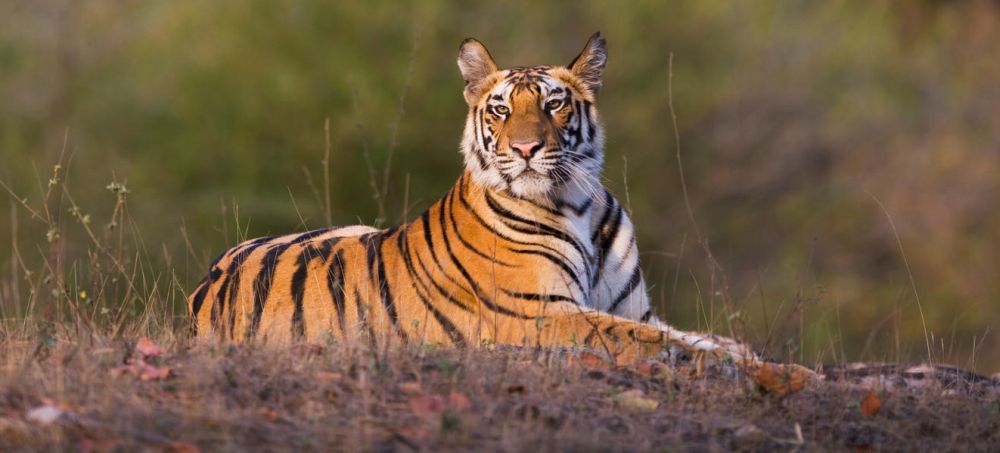
Image: Theo Allofs/WWF-US
Putting up walls and electric fences might protect human beings and their properties from damage but it could end up killing the wild animals trying to trespass. The governments need to formulate teams like the Anti-Depredation Squad in the Assam that has been formed to effectively handle the human-wildlife conflict situations.
It is essential to find new and more effective measures to resolve human-animal conflicts. Relocation of human settlements should be done, which will alter the ecological setting in favour of wild animals, and thus prevent conflict.
Another way of lessening the causes of human-wildlife conflicts in India is through the establishment of wildlife corridors. But, so far, many of these measures to resolve the human-wildlife conflicts in India have proven unreliable and unyielding.
